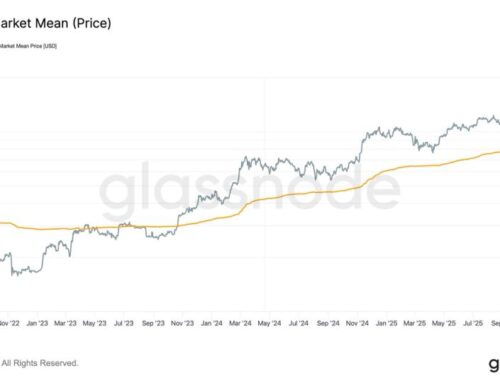Bitcoin ETFs End 10-Day Inflow Streak as BTC Faces Worst Q1 Performance Since 2018
March 31, 2025
Bitcoin is on track for its worst first-quarter performance since 2018, with prices dropping 11.86% in Q1 2025, according to CoinGlass.
Bitcoin is on track for its worst first-quarter performance since 2018, with prices dropping 11.86% in Q1 2025, according to CoinGlass. A shift in market sentiment has accompanied the decline, as Bitcoin faces selling pressure below $85,000. Nearly $90.56 million in BTC positions were liquidated in the past 24 hours, with long traders losing $79.3 million and short sellers losing $11.25 million. Bitcoin’s open interest has fallen by 4.5%, bringing it closer to a low of $54 billion, signaling a drop in trading activity. The long/short ratio currently stands at 0.6051, showing that 62.3% of traders expect further declines, while 38% anticipate a rebound.
The downturn in Bitcoin comes as U.S.-based spot Bitcoin ETFs saw their longest inflow streak of the year conclude on Friday. Fidelity’s FBTC recorded $93.16 million in outflows, reversing the $97.14 million in inflows it received the previous day. Other funds saw little to no movement. Overall, trading volume across U.S. Bitcoin ETFs increased slightly, reaching $2.22 billion. The 10-day inflow streak added over $1 billion in value, a figure that Presto Research analyst Min Jung described as “relatively modest.” While institutional demand for Bitcoin remains, Jung noted that investors are not showing aggressive risk appetite.
Bitcoin’s performance this quarter is shaping up to be its worst since 2018, when it fell 49.7%. Its current 11.86% drop surpasses the 10.83% decline from Q1 2020. If prices recover slightly, the quarter’s losses could settle below the 2020 figure, but continued pressure could push Bitcoin below the $80,000 level. The recent sell-off erased almost all of Bitcoin’s weekly gains, and investors remain cautious ahead of President Trump’s U.S. tariffs set to take effect on April 2. Stronger-than-expected core PCE data has also contributed to uncertainty in the market.
Ethereum ETFs saw a rare positive day on Friday, breaking a 17-day streak of net outflows. Grayscale’s ETHE fund brought in $4.68 million, while other Ethereum ETFs recorded no major inflows or outflows. The total value of U.S. spot Ethereum ETFs stands at $6.42 billion, a fraction of the $94.39 billion held by Bitcoin ETFs. Grayscale’s ETHE remains the largest Ethereum ETF with $2.28 billion in assets, followed by BlackRock’s ETHA at $2.24 billion.
Ethereum’s price is down about 2.5% in the past 24 hours. The network is preparing for its Pectra upgrade, expected in late April or early May, after its successful deployment on the Hoodi testnet.
This article contains links to third-party websites or other content for information purposes only (“Third-Party Sites”). The Third-Party Sites are not under the control of CoinMarketCap, and CoinMarketCap is not responsible for the content of any Third-Party Site, including without limitation any link contained in a Third-Party Site, or any changes or updates to a Third-Party Site. CoinMarketCap is providing these links to you only as a convenience, and the inclusion of any link does not imply endorsement, approval or recommendation by CoinMarketCap of the site or any association with its operators.
This article is intended to be used and must be used for informational purposes only. It is important to do your own research and analysis before making any material decisions related to any of the products or services described. This article is not intended as, and shall not be construed as, financial advice.
The views and opinions expressed in this article are the author’s [company’s] own and do not necessarily reflect those of CoinMarketCap.
Search
RECENT PRESS RELEASES
Related Post




